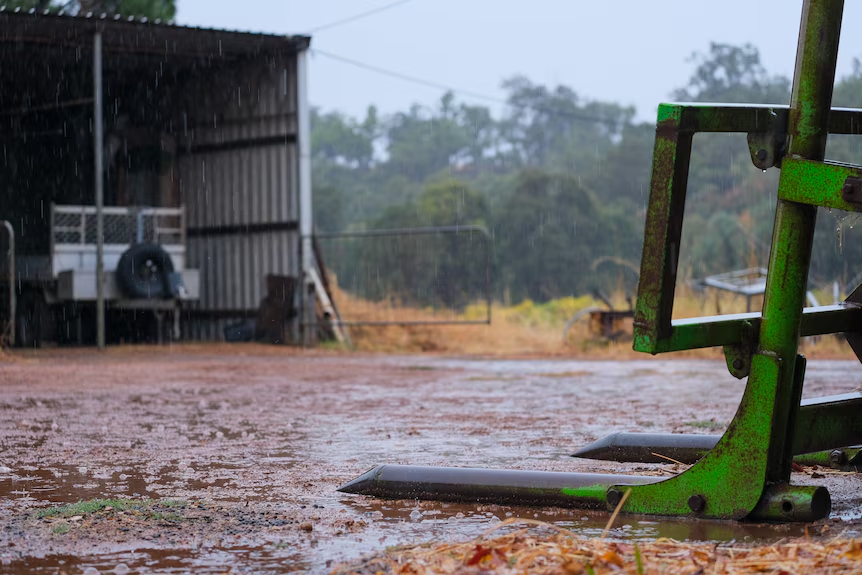Cold Front Brings Much-Needed Rain, Thunderstorm News to Western Australia’s South West

A cold front has brought much-needed relief from one of the worst dry spells in recent memory, delivering essential rain across Western Australia’s South West.
The storm front, which swept over the region on Thursday, brought the heaviest rains recorded this year to several towns across the area.
Significant rainfall from Wednesday to Thursday included 82 millimeters at Wilydowns, 78 millimeters at Harman South, 60 millimeters at Cowaramup, and 51 millimeters at Duggans.
Bunbury received 35 millimeters in major centers since 9 am Thursday, Collie saw 33 millimeters and Busselton received 13 millimeters.
A severe thunderstorm warning was issued Thursday afternoon for parts of the South West, Lower West, and Great Southern districts.
The State Emergency Service has received 48 assistance calls from Binningup to Dunsborough, mostly for minor damage and flooding.
Caroline Crow, a spokesperson for the Bureau of Meteorology, stated that the cold front would continue moving through the region on Thursday afternoon and evening.
“We’ve seen isolated falls of up to 40 millimeters in an hour in some areas,” she said. “However, the more widespread falls have been around 15 to 20 millimeters.
“As these lines of shower and thunderstorm activity develop, they will move through the region again.”
Minor flooding was reported in Bunbury, but no significant damage was noted.
“You’ll probably notice that many drains are very full at the moment, so please drive safely,” said Bunbury Mayor Jaysen Miguel.
“Our pump stations work overtime to ensure everything is sorted out.”
Benefits Of Rain To Western Australia’s South West
The rain in Western Australia’s South West brings several benefits to the region:
- Relief from dry conditions: The region has been experiencing below-average rainfall, leading to dry conditions and an increased risk of bushfires. The rain helps to alleviate these dry conditions and reduce the risk of bushfires.
- Replenishment of water supplies: The rain helps to replenish water catchments, dams, and reservoirs, which are essential for agricultural activities, drinking water supplies, and the environment.
- Support for agriculture: The rain benefits farmers and agricultural activities, providing moisture for crops and pasture growth.
- Environmental benefits: Rain benefits the environment, supports plant growth, and provides habitat and water for wildlife.
- Improved air quality: The rain helps to clear the air of dust and pollutants, improving air quality in the region.

Similar Posts
Turn Images into Text: Discover the 10 Top OCR Software Recommendations
The Future of Media Monitoring Tools in 2025: AI, Automation, and Accuracy
Best Quantum Computing Startups